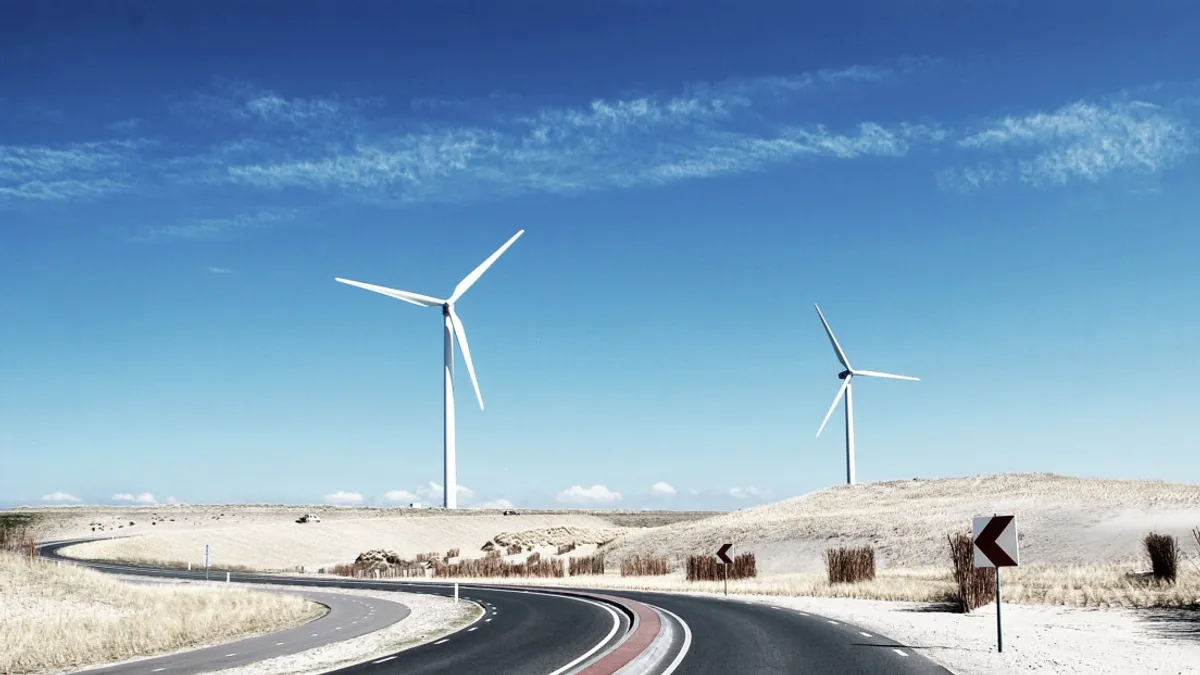Dive Brief:
- Renewables generation is set to outpace coal generation in 2020, according to the latest short-term energy outlook from the U.S. Energy Information Administration (EIA), amid shrinking electricity demand caused by COVID-19 response measures as well as low natural gas prices.
- EIA estimates coal generation will total 724.2 billion kWh in 2020, compared to 761 billion kWh of renewables, a considerable difference from 2019 when the coal/renewables breakdown was 959.5 billion kWh to 688 billion kWh. Renewable generation will continue to outpace coal in 2021 — 833.8 billion kWh to 810.3 billion kWh — EIA forecast.
- The prediction that renewable energy will overtake coal generation is not new, Amanda Levin, policy analyst with the Natural Resources Defense Council, told Utility Dive, but COVID-19 has accelerated that transition. "I do think that 2019 is going to be the last year that coal produces more power than renewables," she said.
Dive Insight:
Stay-at-home policies, social distancing orders and factory closures put in place due to the COVID-19 pandemic are likely to shrink electricity consumption over the next few months, according to EIA. The agency estimates a 6.5% decrease in commercial and industrial electricity sales, as well as a 1.3% reduction in residential sales driven by mild weather. In total, U.S. electric generation is forecast to drop by 5%, with fossil fuels hit the hardest.
Coal consumption in particular is expected to decrease by nearly a quarter to 453 million short tons this year, due to both lower power sector consumption as well as competitive natural gas prices. The analysis noted that some large coal producers have opted to shut down their mines for 14 to 30 days, while others have not set a date to reopen.
"EIA expects that these decreases in overall production will have a noticeable effect on supply, contributing to a steeper decline than would have occurred had these measures not been put into place," the report said.
Renewables have been following an upward trend and coal has generally been declining over the past few years, Tyler Hodge, EIA economist, told Utility Dive in an email. However, he cautioned that the forecasts are still subject to much uncertainty, and it isn't definite that this crossover will occur, especially since there's a possibility that wind and solar projects could be delayed or postponed and declining coal forecasts are highly dependent on the forecast for reduced electricity demand. Despite the numbers in the latest Short Term Energy Outlook, "at this point in time, it’s probably more accurate to say that renewable energy sources will supply about the same amount of generation as coal over the next two years," Hodge said.
Coal is generally the first resource to feel the brunt of demand reductions, according to Levin. Unlike renewables — which are cheap to produce once systems are built — it costs quite a bit of money to burn a ton of coal, she said.
"So what ends up happening is when demand goes down, the most expensive last unit of energy purchased is the first to be taken offline," Levin said. In the current market, renewables, natural gas and nuclear tend to be cheaper from a marginal cost perspective, and coal units are the first to be taken offline, she added.
However, coal consumption could rise by 10% in 2021 as part of a broader economic recovery and an increase in natural gas prices, EIA found.
Renewable generation, meanwhile, is projected to grow by 11% this year, according to the report, despite possible COVID-related impacts to new generation capacity builds in the coming months. This year, EIA expects an additional 20.4 GW of new wind capacity and 12.7 GW of utility-scale solar capacity, although the forecast remains highly uncertain.
"It's important to recognize that this is really the inevitable conclusion of the energy transition that we're on the path towards," Joe Daniel, senior energy analyst with the Union of Concerned Scientists, told Utility Dive.
Reduced demand, coupled with low natural gas prices have shown just how unnecessary most coal-fired plants are on the system, he said. "I think right now is a really critical moment for those utilities that do own coal because how they respond to the current economic realities is going to tell us a lot about their view and their stance on coal as a resource."
UPDATE: This story has been updated with comments from EIA.















